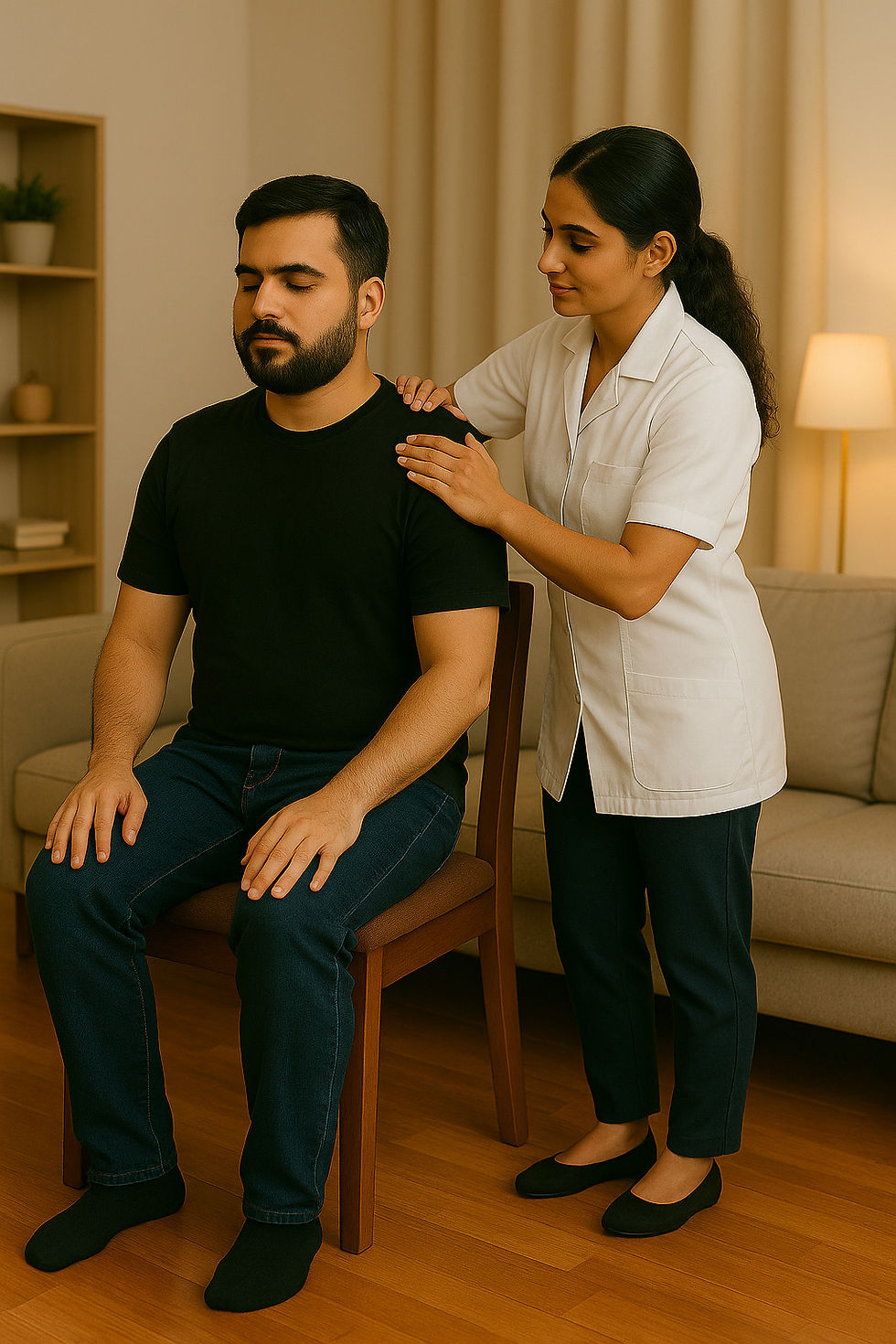How to Find the Best Physiotherapy Near Me: A Step-by-Step Guide
- Alastair Pavrey
- Aug 21
- 3 min read
Updated: Sep 1
When pain, injury, or mobility issues affect your daily life, searching “physiotherapy near me” is often the first step toward recovery. With so many clinics and therapists available, how do you decide which one is right for you or your loved one?
This guide will walk you through a clear, step-by-step approach to finding the best physiotherapy services nearby, whether you’re looking for home physiotherapy, post-surgery care, or long-term rehabilitation.

Step 1: Identify Your Needs
Not all physiotherapy is the same. Start by understanding why you need physiotherapy.
Pain Management: Back pain, neck stiffness, joint issues.
Post-Surgery Rehab: Knee replacement, spine surgery, fracture recovery.
Chronic Conditions: Stroke, Parkinson’s, arthritis.
Preventive Care: Posture correction, mobility training, sports injury prevention.
👉 Write down your primary goal: Do you want pain relief, faster recovery, or long-term functional improvement?
Step 2: Check for Location and Accessibility
When you’re in pain, traveling long distances is the last thing you want. Choosing a physiotherapist close to your home or workplace ensures convenience and consistency.
💡 Tip: Home physiotherapy services (like Physica’s) eliminate travel altogether, bringing certified physiotherapists to your doorstep.
Step 3: Look for Verified Credentials
Always ask: Is my physiotherapist certified and experienced?
In India, physiotherapists must hold a BPT (Bachelor of Physiotherapy) or higher.
Look for additional training in areas like neuro-rehab, sports injuries, or geriatric care.
Ask if the company/clinic does background checks and ongoing training.
Why this matters: Many unverified freelance physios operate without proper checks, which can compromise your safety and recovery outcomes.
Step 4: Explore the Range of Services
A good physiotherapy provider should cover more than just basic exercises. Look for services such as:
Musculoskeletal Physiotherapy – for muscle, joint, and back pain
Neuro Physiotherapy – stroke, Parkinson’s, paralysis recovery
Post-Surgical Rehab – safe recovery after major surgeries
Elderly Care Physiotherapy – mobility, balance, fall prevention
At-Home Services – convenience and personalized attention
Step 5: Check Reviews and Patient Stories For Best Physiotherapy Near Me
In healthcare, trust is everything. Reading reviews, testimonials, or Google ratings can give you a clear idea about:
Patient satisfaction
Therapist professionalism
Recovery success rates
Quality of support team
Physica, for example, has a 4.9/5 Google rating across 15,000+ sessions, with hundreds of repeat patients and referrals from 100+ doctors.
Step 6: Evaluate Technology and Systems
Modern physiotherapy isn’t just about manual exercises. Ask:
Do they use digital tracking for sessions?
Are there clinical protocols for progress measurement?
Do they provide insurance-compliant invoices for mediclaim claims?
👉 Providers with robust systems ensure consistency, accountability, and better outcomes.
Step 7: Compare Pricing and Packages
Physiotherapy pricing can vary widely, but the cheapest isn’t always the best. Look for:
Transparent pricing (per session / package rates)
Customized plans based on your needs
Options for insurance or corporate wellness coverage
💡 Investing in the right physiotherapy saves money long-term by avoiding complications and hospital visits.
Step 8: Look for Follow-Up and Support
The best physiotherapy isn’t just about one session — it’s about long-term recovery.
Questions to ask:
Will the therapist track progress over weeks?
Is there support for home exercise plans?
Can you reach out easily for follow-ups?
A structured follow-up system increases your chances of full recovery.
Final Step: Take Action
Finding the best physiotherapy near you doesn’t have to be overwhelming. By following these steps — identifying your needs, checking credentials, reading reviews, and trying a trial session — you’ll be on the path to recovery faster.
Don’t wait for pain or mobility issues to worsen. The sooner you start, the better your recovery.



